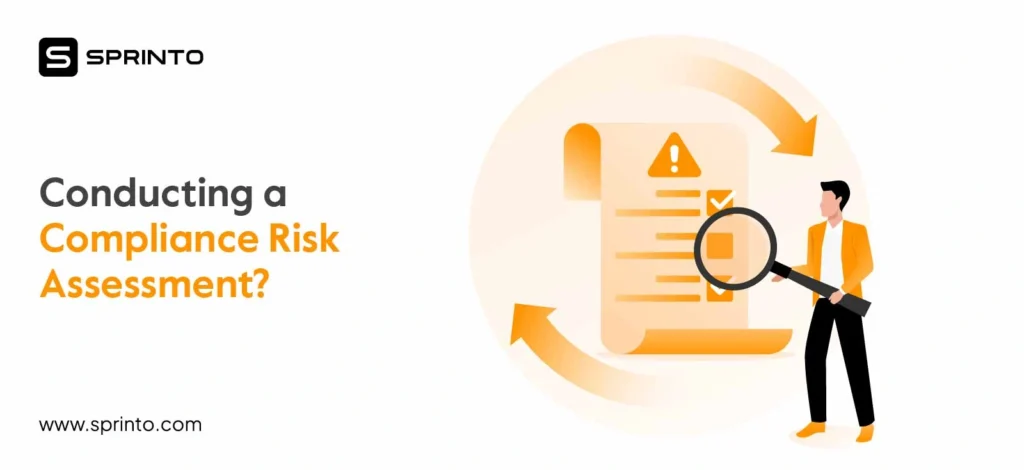Research suggests that nearly half of all deals collapse during due diligence, often because investors uncover liabilities the founders either overlooked or downplayed. Baker McKenzie and partner reports further show that compliance, governance, and regulatory risks are now central to M&A outcomes—especially in cross-border deals where scrutiny is even sharper.
And yet, most founders enter a fundraise or acquisition with optimism. The early signs may be positive: investors show interest, the pitch resonates, and sometimes even a term sheet appears on the table. But the real test comes later, in the due diligence phase—when investors stop relying on the founder’s narrative and start combing through the evidence.
TL:DR
| Due diligence is the point where investor enthusiasm meets verification—and nearly half of deals collapse here when gaps or inconsistencies surface. |
| A due diligence red flag—whether sloppy documentation, unresolved legal issues, or security noncompliance—doesn’t just signal risk, it raises doubts about leadership discipline. |
| Founders who prepare early build investor trust and demonstrate funding readiness, turning diligence from a threat into proof of operational maturity. |
Red Flag Due Diligence: What Investors Test First
Think of red flag due diligence as a triage step: a focused review designed to quickly identify the kinds of risks that could render the entire transaction non-viable. Unlike full due diligence, which surveys every corner of the business, a red-flag review zeroes in on decisive areas—financial irregularities, regulatory violations, security noncompliance, or unresolved legal disputes—that can kill a deal outright.
This isn’t an exhaustive process. Instead, it zeroes in on the areas where failure is fatal:
- Financial irregularities that distort valuation or conceal liabilities.
- Regulatory non-compliance that exposes the company to fines or sanctions.
- Unresolved legal disputes that cast doubt on IP ownership, contracts, or corporate structure.
- Weak cybersecurity controls that heighten exposure to breaches and reputational loss.
The findings are distilled into a red flag report, a condensed document that doesn’t attempt to catalog every detail but instead surfaces the deal breakers. Investors use this to decide whether to proceed, renegotiate terms, or walk away early.
For founders, this is the first point at which control of the narrative shifts. No matter how compelling the pitch, if red flag diligence surfaces concerns in any of these areas, the tone of the deal changes instantly.
Be investor-ready from day one—speak to Sprinto’s compliance experts and avoid red-flag surprises.
What Investors Inevitably Find: Common Blind Spots
Founders tend to believe that diligence is about growth and customer metrics. But investors spend as much, if not more, time examining the operational foundations of the business. It is here that the most damaging red flags tend to appear.
1. Disorganized Documentation
A disordered data room—missing financial statements, unsigned contracts, and errors in cap tables—signals more than poor housekeeping. It suggests the company may not have control over its obligations. Investors assume that if critical documents are inconsistent or incomplete, risk is being concealed elsewhere.
2. Security Non-compliance
Given today’s regulatory environment, weak security is treated as a direct liability. Investors expect to see baseline controls such as access management, encryption, monitoring, and incident response. Their absence signals not just immaturity but exposure: the kind of risk that can wipe out enterprise value overnight.
3. Missing Policies and Controls
Early-stage startups often run on trust and ad-hoc fixes. And so, if you can’t produce written policies for vendor risk management, access controls, or incident response, it’s read as a governance gap—and raises doubts about whether the business can handle regulatory or contractual pressure as it grows.
4. No Compliance Certifications or Audits
For startups dealing with sensitive data or selling into the enterprise, certifications like SOC 2 or ISO 27001 are shorthand for operational discipline. Their absence suggests leadership has either not prioritized regulatory requirements or that the company is not yet ready for enterprise-grade scrutiny.
5. Unresolved Legal or Regulatory Issues
Outstanding lawsuits, IP disputes, expired licenses, or tax liabilities create not only financial uncertainty but cultural concern. Investors interpret unresolved issues as a pattern of avoidance—an unwillingness to address problems until forced.
Individually, these may not always kill a deal. Collectively, they erode the perception of rigor. Once rigor is in doubt, valuation and trust start to collapse.
Why Small Misses Matter More Than Big Ones
It’s tempting for founders to assume that diligence collapses only over catastrophic failures: a fraud case, a major undisclosed liability, a breach under investigation. In reality, smaller, subtler red flags often prove deadlier because they undermine the one thing diligence is meant to secure: confidence.
An investor doesn’t panic at the absence of a single document; they panic at what it signals. If you can’t produce basic records on time, what does that say about how you manage risk? If policies exist but aren’t enforced, what else is being ignored? These lapses expand the surface of doubt.
This is where culture comes into play. Diligence is less about whether a company has every certification in hand and more about whether it demonstrates a pattern of acknowledging risks early, addressing them systematically, and building infrastructure to sustain discipline at scale. Investors use red flags as proxies for this cultural orientation. Do you lead proactively, or do you defer governance until forced? That distinction often determines whether a deal crosses the finish line.
The Silent Killers: How Trust Erodes
Deals don’t always collapse with a dramatic revelation. More often, they die silently as confidence erodes. A missing SOC 2 may lead to more probing questions. An unresolved vendor risk assessment may trigger requests for additional evidence. Each gap adds friction, extending timelines, lowering valuations, and increasing investor skepticism.
There are three recurring dynamics that turn gaps into deal killers:
- Unquantifiable risk: Some exposures—like breaches, fraud, or major regulatory violations—are impossible to model. The downside is uncapped, so investors simply walk away.
- Cumulative doubt: Small misses pile up. Each inconsistency chips away at credibility until investors decide it’s safer to move on than to proceed with reservations.
- Regulatory and legal exposure: Unresolved compliance gaps aren’t just present risks; they are future liabilities. Fines, lawsuits, and remediation costs can all outweigh upside. Investors and acquirers know this and will not take on liabilities they can’t control.
Trust rarely collapses in a single moment. It erodes through the accumulation of signals that a company lacks discipline. By the time investors step back, founders are often blindsided—believing the problems were minor when, in fact, they were symptomatic.
Protect investor confidence—see how Sprinto’s automation keeps you continuously compliant.
Red Flags as Proxies for Culture
Red flags, in practice, function as diagnostic signals of culture. Investors have seen enough patterns across hundreds of deals to know that the operational gaps they uncover, whether it’s disordered documentation, informal policies, or delayed certifications, are rarely isolated.
They reveal how leadership allocates scarce attention, whether uncomfortable decisions are addressed head-on or deferred, and how much discipline exists beneath the surface of growth. A startup that consistently leaves issues unresolved is effectively signaling that governance is reactive, not structural; that culture normalizes shortcuts until they become visible under stress.
What complicates this is that culture isn’t about perfection. Investors don’t expect an early-stage company to look like a public firm. What they want to see is adaptability: leaders who surface weaknesses unprompted, show a credible remediation plan, and demonstrate that rigor can scale alongside growth. In this reading, the same red flag can tell two different stories.
Surviving the Autopsy: How Founders Can Prepare
If diligence is where deals die, preparation is how founders inoculate themselves. Surviving the process requires foresight, not improvisation.
- Start early: Certifications and compliance frameworks can take months. Founders who wait until diligence begins to address them are already too late.
- Run a pre-diligence audit: Treat your own company as an outsider would. Review financials, legal records, compliance controls, and policies critically. Identify gaps before investors do.
- Organize documentation: A clean, consistent data room is not optional. Financials, contracts, HR records, and compliance evidence should be centralized and coherent.
- Eliminate obvious liabilities: Resolve minor lawsuits, renew lapsed licenses, close out old regulatory issues. Investors treat unresolved problems as patterns.
- Build security fundamentals: Multi-factor authentication, encryption, backups, and documented incident response plans are baseline expectations. They should be enforced, not aspirational.
- Answer with transparency: When issues are raised, candor matters. Investors are less concerned with past mistakes than with whether leadership recognizes and remediates them.
The point is not perfection. Investors know no company is flawless. The point is to demonstrate a culture of rigor and foresight. That is what builds trust when the spotlight is harshest.
Build Security-led Investor Confidence With Sprinto
Most founders don’t fail diligence because they lack ambition. They fail because discipline is difficult to maintain when growth is the priority. This is where compliance automation platforms like Sprinto can shift the dynamic.
Sprinto helps startups systematize the very practices investors scrutinize most: certifications, continuous monitoring, policy enforcement, and audit-ready evidence. By embedding compliance into daily operations, Sprinto reduces the risk that diligence will expose unseen vulnerabilities.
- Accelerated certifications: SOC 2, ISO 27001, HIPAA, and GDPR frameworks are mapped automatically, cutting certification timelines.
- Continuous monitoring: Access controls, encryption, and audit logs are tracked in real time, ensuring that gaps are caught early.
- Centralized documentation: Policies, training logs, and vendor assessments are organized in a single repository, ready for investor review.
- Vendor risk management: Third-party exposures are tracked and mitigated, closing one of the most common oversight gaps.
FAQs
The “4 P’s” often cited in due diligence are People, Processes, Performance, and Potential. Together, they form a lens investors use to evaluate whether a company is stable today and resilient tomorrow. If any of these areas reveal due diligence red flags—say, weak internal processes, unresolved disputes involving people, or inflated performance claims—investors will question the company’s ability to deliver on its potential.
A due diligence checklist is a structured set of documents and evidence that investors expect to review. It covers financials, contracts, governance records, security controls, and compliance certifications. Many founders underestimate how detailed this list can be, which is why gaps show up as common due diligence red flags. Having a well-prepared checklist is often the difference between inspiring investor trust or raising concerns that stall negotiations.
The most frequent deal blockers fall into three categories:
1. Security noncompliance (e.g., no SOC 2, ISO 27001, or basic access controls).
2. Regulatory violations (GDPR, HIPAA, or industry-specific requirements not being met).
3. Unresolved legal liabilities (expired licenses, unsettled IP claims, or ongoing litigation).
Achieving true funding readiness depends on your starting point. Companies with informal policies and no certifications may need 6–12 months to mature their compliance posture and close gaps. Those already working toward frameworks like SOC 2 can be investor-ready in 3–6 months.
The quickest path is to prioritize high-severity issues that would show up in any red flag due diligence report. That means documenting critical security policies, implementing baseline controls (like MFA, encryption, incident response), and resolving obvious liabilities (licenses, taxes, outstanding disputes).
Tools like Sprinto can accelerate this by automating evidence collection and mapping policies to standards, helping founders move from gaps to investor trust more efficiently. Templates for a red flag due diligence report often highlight these same items, so closing them proactively avoids last-minute surprises.
Payal Wadhwa
Payal is your friendly neighborhood compliance whiz who is also ISC2 certified! She turns perplexing compliance lingo into actionable advice about keeping your digital business safe and savvy. When she isn’t saving virtual worlds, she’s penning down poetic musings or lighting up local open mics. Cyber savvy by day, poet by night!
Explore more
research & insights curated to help you earn a seat at the table.


















